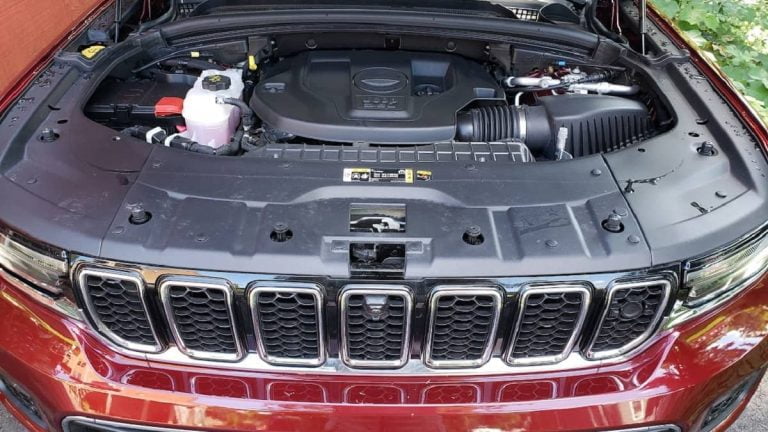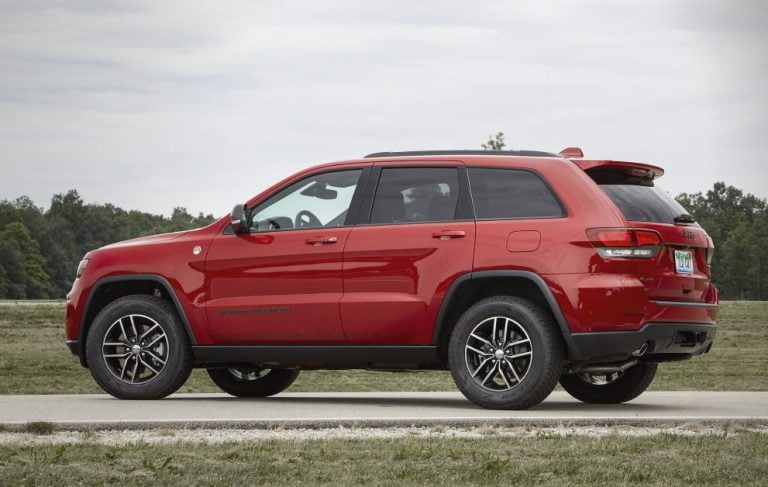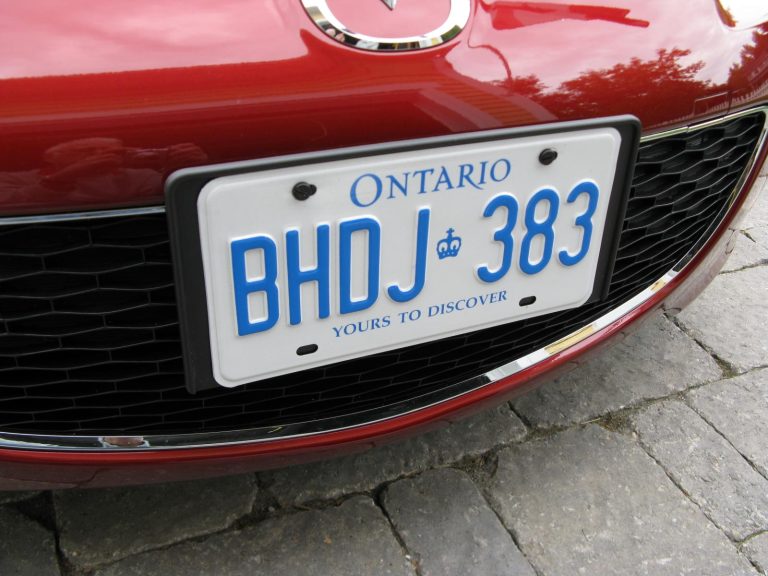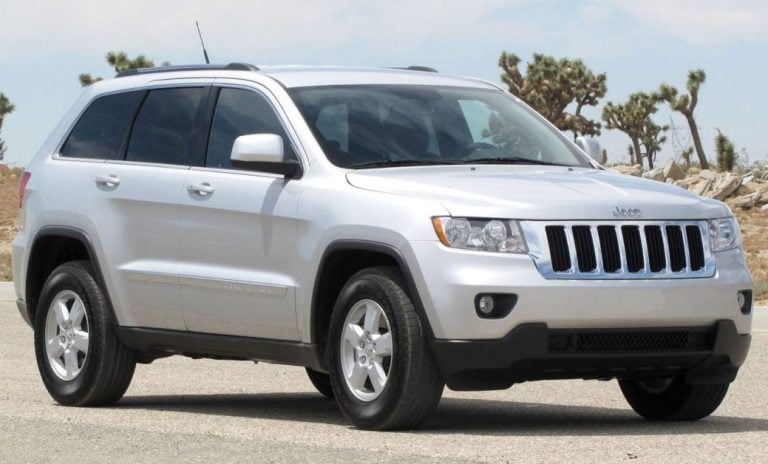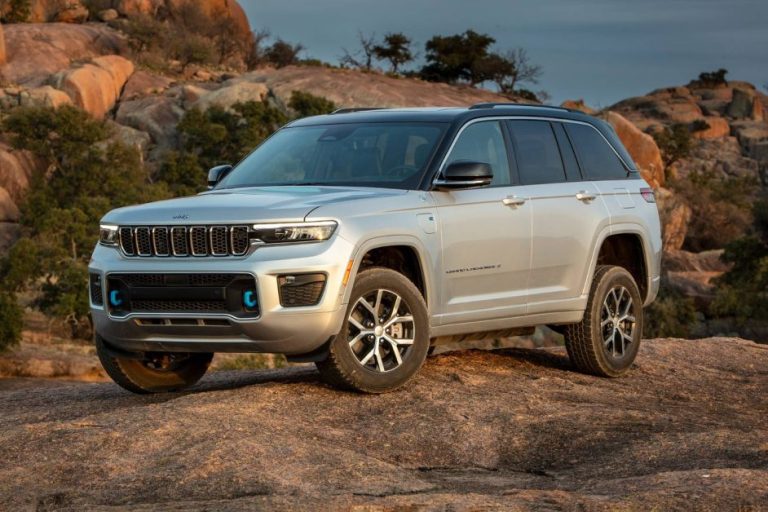Can You Flat Tow a Jeep Grand Cherokee? Here’s Why It’s Important to Know
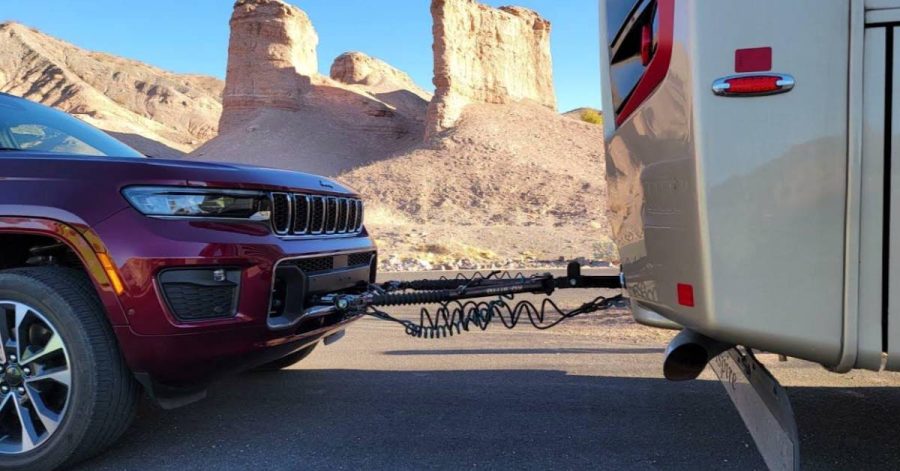
Picture this: You’re about to embark on an epic cross-country road trip, with adventure calling your name.
But here’s the catch: you want to bring your trusty Jeep Grand Cherokee along for the ride.
The question on your mind is, can you flat tow it?
In this article, we explore the fascinating world of flat towing, uncovering the truth about which vehicles are fit for this mode of transportation and the crucial steps to keep your engine purring with delight.
Buckle up and let’s dive in!
Can You Flat Tow a Jeep Grand Cherokee?
Yes, you can flat tow a Jeep Grand Cherokee.
Flat towing is a method of towing a vehicle with all four wheels on the ground, and it does not require trailers or dollies.
However, it is crucial to disconnect the wheels from the drivetrain in the approved way to prevent drivetrain wear and potential engine damage.
It is advisable to consult the manufacturer’s website for any updates regarding which Jeep models can be flat towed.
Key Points:
- Jeep Grand Cherokee can be flat towed.
- Flat towing means towing a vehicle with all four wheels on the ground without using trailers or dollies.
- Wheel disconnection from the drivetrain is necessary to prevent drivetrain wear and engine damage.
- Consult the manufacturer’s website for any updates on which Jeep models can be flat towed.
- Flat towing is a recommended method for towing a Jeep Grand Cherokee.
- Following the approved disconnection process is crucial to avoid potential damage.
Check this out:
💡 Did You Know?
1. The first Jeep Grand Cherokee, manufactured in 1993, was not designed to be flat towed. However, starting from the 2005 model, Jeep introduced a “Neutral” position in the transfer case that enabled flat towing without damaging the transmission.
2. The tow capacity of a Jeep Grand Cherokee varies depending on the year and engine option. While earlier models could tow between 5,000 to 6,500 pounds, the more recent versions boast an impressive towing capacity of up to 7,200 pounds.
3. Flat towing a Jeep Grand Cherokee, or any vehicle for that matter, requires the use of specific towing equipment. Typically, it involves using a tow bar, base plate, safety cables, and a supplemental braking system. It’s essential to follow the manufacturer’s instructions and guidelines for safe flat towing.
4. Unlike many vehicles, the Jeep Grand Cherokee’s electronic stability control and four-wheel drive systems do not have to be disabled when flat towing. You should consult the owner’s manual for the specific year or reach out to a knowledgeable Jeep representative to ensure correct procedures are followed.
5. Flat towing a Jeep Grand Cherokee is a convenient and efficient way to bring along a vehicle behind a motorhome or recreational vehicle (RV). It allows owners to explore off-road trails and remote destinations without the need to have a second vehicle for transportation once they arrive at their destination.
What Is Flat Towing?
Flat towing, also known as dinghy towing, is a method of towing a vehicle with all four wheels on the ground. Unlike traditional towing methods that require trailers or dollies to lift the entire vehicle off the ground, flat towing allows the vehicle to be towed behind another vehicle without the need for additional equipment. This method is often used by RV owners who want to bring their vehicles along on their travels.
When flat towing a vehicle, it is crucial to ensure that the vehicle is properly prepared and capable of being towed in this manner. Not all vehicles are suitable for flat towing, as towing a vehicle with all four wheels on the ground places stress on the drivetrain. It is important to consult the vehicle’s manufacturer to determine if flat towing is safe and approved for a particular model.
No Trailers Or Dollies Required
One of the benefits of flat towing is that it eliminates the need for trailers or dollies. Traditional towing methods often require the use of these additional pieces of equipment, which can be cumbersome and add extra weight to the towing setup.
Flat towing simplifies the process by allowing the vehicle to be towed directly behind another vehicle, saving time and effort.
By eliminating the need for trailers or dollies, flat towing also provides flexibility in terms of where and how the vehicle can be towed. Whether it’s navigating tight spaces or maneuvering through challenging terrains, flat towing offers a more convenient towing solution.
“Flat towing simplifies the process and offers a more convenient towing solution.”
Not All Jeep Models Can Be Flat Towed
While flat towing can be a convenient method for towing, it is important to note that not all vehicles, including certain Jeep models, can be safely flat towed. Each vehicle has different towing specifications, and it is crucial to consult the manufacturer’s guidelines to determine if flat towing is approved for a specific model.
When it comes to the Jeep Grand Cherokee, it is necessary to check the owner’s manual or the manufacturer’s website to verify if the specific model can be flat towed. Jeep has made some models of the Grand Cherokee with tow-friendly features, while others may require modifications or additional equipment for safe flat towing.
Disconnecting Wheels From Drivetrain
To flat tow a vehicle safely, it is crucial to disconnect the wheels from the drivetrain. This is typically achieved by placing the vehicle in neutral and disengaging the transmission. In some cases, there might be a transfer case mode specifically designed for flat towing, which should be engaged.
By disconnecting the wheels from the drivetrain, it helps to protect the vehicle’s transmission and drivetrain components from excessive wear and tear. This protection becomes even more important during long-distance towing, as the drivetrain might endure additional strain if it remains connected throughout the towing process.
Avoiding Drivetrain Wear Is Crucial
One of the primary reasons for disconnecting the wheels from the drivetrain when flat towing is to avoid drivetrain wear. Towing a vehicle with its drivetrain engaged can cause significant damage to the transmission, drive shaft, and other drivetrain components. These components are not designed to withstand the forces and stresses exerted during towing, which can result in costly repairs.
To protect the drivetrain and ensure a safe towing experience, it is essential to follow the manufacturer’s guidelines and disconnect the wheels from the drivetrain properly. By doing so, you can avoid unnecessary wear and prevent potential damage to your vehicle’s drivetrain.
Flat Towing Can Cause Engine Damage If Done Incorrectly
Flat towing a vehicle incorrectly can lead to engine damage. When a vehicle is towed with the engine running, such as in the case of a vehicle being towed with all four wheels on the ground, the engine can suffer from inadequate lubrication. This can cause excessive heat buildup, leading to engine damage or even complete failure.
To ensure the engine is not damaged during flat towing, it is important to adhere to the manufacturer’s guidelines and disconnect the wheels from the drivetrain properly. Additionally, it is recommended to periodically start the towed vehicle’s engine to circulate the lubricating fluids and prevent overheating.
Keep Checking the Manufacturer’s Website For Updates
Towing guidelines and recommendations can change over time as manufacturers update their specifications. It is crucial to periodically check the manufacturer’s website or consult the owner’s manual for the most up-to-date information on flat towing a Jeep Grand Cherokee or any other vehicle.
Manufacturers may release updates regarding towing capabilities for specific models, as well as any modifications or additional equipment required for safe flat towing. Staying informed and following the manufacturer’s guidelines is essential to ensure a safe and hassle-free towing experience.
Conclusion
Understanding whether you can flat tow a Jeep Grand Cherokee or any other vehicle is essential to ensure a safe and successful towing experience. Flat towing offers a convenient and efficient way to tow a vehicle without the need for trailers or dollies. However, not all vehicles are suitable for flat towing, and it is crucial to consult the manufacturer’s guidelines to determine if flat towing is approved for a specific model.
Disconnecting the wheels from the drivetrain and avoiding excessive wear on the drivetrain components is crucial to preventing damage during flat towing. Incorrectly flat towing a vehicle can also lead to engine damage due to inadequate lubrication.
Lastly, it is important to continually check the manufacturer’s website for updates on towing specifications and guidelines, as they may change over time. By staying informed and following the proper procedures, you can ensure a safe and worry-free flat towing experience with your Jeep Grand Cherokee or any other vehicle.
FAQ
Which Jeep models are flat towable?
All Jeep Wrangler and Jeep Gladiator models, regardless of their transmission option, are flat towable. This means that you can easily tow these vehicles behind your RV or any other towing vehicle without any complications. Make sure to engage the parking brake before towing to ensure the vehicle remains securely in place. While these Jeeps are designed for flat towing, it is still important to familiarize yourself with the specific guidelines and precautions to ensure a smooth and safe towing experience.
How do you flat tow a Jeep with an automatic transmission?
To flat tow a Jeep with an automatic transmission, start by shifting the automatic transmission into NEUTRAL (N), or depress the clutch pedal if it’s a manual transmission. Then, adjust the transfer case lever into the desired position, whether it’s 2-Hi, 4-Hi, or 4-Lo. Finally, shift the automatic transmission back into DRIVE (D), or release the clutch if it’s a manual transmission. This ensures that the Jeep can be towed smoothly and without damaging the transmission.
What component allows Jeep Cherokee to be flat towed?
The neutral transfer case is a unique feature in the Jeep Cherokee that allows it to be towed without the need for a trailer or dolly. This component disengages the transmission from the drive shafts, ensuring that the wheels are not turning while being towed. This not only makes flat-towing safe and convenient but also saves time and effort for Jeep Cherokee owners.
Can a Jeep Grand Cherokee be towed behind an RV?
Yes, the Jeep Grand Cherokee can be towed behind an RV, as long as it has 4-LO range and is not an SRT variant. It’s important to consult the owner’s manual or manufacturer’s website to verify if your specific trim level can be flat towed. Additionally, some Jeep Wrangler models are also suitable for flat towing, so it’s worth checking their towing specifications if you are considering a Wrangler instead.






